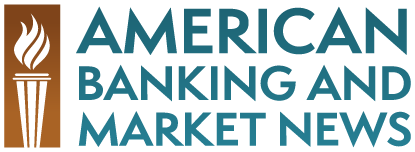Huge capital injections to giant banks such as Bank of America Corp. (BAC) and Citigroup Inc. (C) are coming under even closer scrutiny as taxpayers are at risk of losing $5.1 billion invested in the Troubled Asset Relief Program (TARP).
In 2009, 123 banks have folded. Among those announced last week was Pacific Coast National Bancorp, a San Clemente, Calif., bank that sold $4.1 million of preferred shares to the Treasury Department in January.
In addition to the rash of failed banks, Federal regulators have had to seize or threaten at least 27 banks that received capital infusions from the TARP program. Four such actions were imposed this month, according to the companies or regulators.
At least eight banks received taxpayer-funded capital either while operating under enforcement actions or shortly after regulatory exams detected serious problems.
And many industry experts suggest there are likely to be more failures. “There are going to be more losses,” predicts Jeff Davis, a banking analyst at FTN Equity Capital Markets Corp. in Memphis, Tenn.
The mounting problems are calling into question how The Treasury Department has run the $700 billion program. The Treasury Department’s special inspector general overseeing TARP has criticized the agency for using terms like “healthy” and “viable” to describe the financial institutions to which aid would be steered. That was misleading, critics claim, because federal officials knew giant banks such as Bank of America Corp. (BAC) and Citigroup Inc. (C) weren’t healthy when they received huge capital injections.
However, Treasury officials said taxpayers are likely to incur some losses but defended the agency’s overall handling of TARP.
“In a crisis such as the one we have gone through, it would not be reasonable to expect that all of the individual investments will earn profits for the taxpayers,” said Treasury spokesman Andrew Williams. “We will continue to work to minimize these losses and maximize recovery to the taxpayer to the extent possible.”
A Fed spokeswoman declined to comment, referring to a September report by the agency’s inspector general that found the Fed’s “procedures were consistent with Treasury’s guidance for reviewing applications and making recommendations for funding.”
Treasury officials said they relied on advice from each financial institution’s regulator when weighing TARP applications. On tough cases, the decision was made by a panel drawn from the four federal regulatory agencies. The process occasionally was marred by disagreements over whether specific institutions deserved aid, according to people familiar with the matter.
Officials said they considered whether an applicant faced a current or pending enforcement order. While such orders generally are aimed at troubled institutions, they didn’t automatically disqualify banks from getting TARP.
“Enforcement actions are intended to be rehabilitative,” said Robert Garsson, a spokesman for the Office of the Comptroller of the Currency. “Most banks that get enforcement actions don’t fail.”
In addition to Pacific Coast National Bancorp, the Nov. 1 bankruptcy filing of commercial lender CIT Group Inc. is expected to cost taxpayers their entire $2.3 billion investment. Five days after that filing, regulators seized a unit of UCBH Holdings Inc., a San Francisco bank that received $298.7 million last November. The government gets preferred shares from TARP recipients, but those shares typically become worthless in a bankruptcy or bank failure.
And in December, Blue Valley Ban Corp. got $21.8 million from TARP even though the Overland Park, Kan., company’s operations were limited by a secret “memorandum of understanding” with the Federal Reserve Bank of Kansas City and state regulators, said Mark A. Fortino, Blue Valley’s finance chief.
A total of 690 financial institutions received combined capital injections of $204.68 billion through TARP as of Nov. 10. More than 40 banks have repaid a total of $70.88 billion, and Treasury has pocketed $10.1 billion in dividend, interest and fee payments from TARP recipients.






